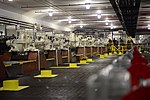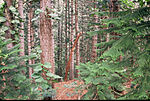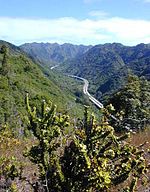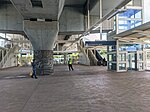Camp H. M. Smith
1941 establishments in HawaiiAiea, HawaiiBuildings and structures in Honolulu County, HawaiiHistoric American Buildings Survey in HawaiiMilitary command and control installations ... and 3 more
Military facilities in HawaiiMilitary headquarters in the United StatesUnited States Marine Corps bases

Camp H. M. Smith is a United States Marine Corps installation in the Halawa census-designated place on the island of Oahu, Hawaii, near the community of Halawa (ha-LA-va) Heights. It is the headquarters of the United States Indo-Pacific Command (INDOPACOM), Special Operations Command Pacific, and Marine Forces Pacific, the Marine service component command of INDOPACOM. The camp, originally the Aiea Naval Hospital, was named for General Holland McTyeire Smith, the first commanding general of Fleet Marine Force Pacific, on June 8, 1955. The initials H. M. also stood for his nickname which was "Howling Mad" referring to his temper and given to him by his Marines.
Excerpt from the Wikipedia article Camp H. M. Smith (License: CC BY-SA 3.0, Authors, Images).Camp H. M. Smith
Elrod Road, Waipahu Hālawa Heights
Geographical coordinates (GPS) Address Nearby Places Show on map
Geographical coordinates (GPS)
| Latitude | Longitude |
|---|---|
| N 21.385833333333 ° | E -157.90638888889 ° |
Address
Elrod Road
Elrod Road
96859 Waipahu, Hālawa Heights
Hawaii, United States
Open on Google Maps









